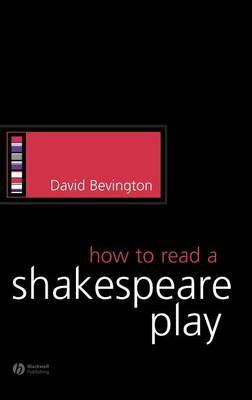Full Product Details
Author: David Bevington (University of Chicago)
Publisher: John Wiley and Sons Ltd
Imprint: Wiley-Blackwell
Dimensions:
Width: 16.10cm
, Height: 1.60cm
, Length: 23.90cm
Weight: 0.397kg
ISBN: 9781405113953
ISBN 10: 1405113952
Pages: 184
Publication Date: 02 June 2006
Audience:
Professional and scholarly
,
Professional & Vocational
Format: Hardback
Publisher's Status: Active
Availability: Out of stock

The supplier is temporarily out of stock of this item. It will be ordered for you on backorder and shipped when it becomes available.
Reviews
?The first chapter is a fabulous, full-frontal, thirteen-page assault that both dispenses information and suggests effective questions that student readers might employ when reading a text in order to ?read aggressively? (p. 9). What is mildly revolutionary is that it is here, in print, ready to be easily disseminated to students and thus to more easily and readily articulate the type of engagement with a text that we hope and expect our students will undertake. Bevington challenges his readers to think in historical, theatrical, and characterological terms. Bevington?s list is instructive and at times brutally honest. Schools should consider investing heavily in this text for the benefit of their pupils; college or university-level students would also be aided by Bevington?s straightforward, avuncular reading advice.? (Year's Work in English Studies, 2008)
The first chapter is a fabulous, full-frontal, thirteen-page assault that both dispenses information and suggests effective questions that student readers might employ when reading a text in order to 'read aggressively' (p. 9). What is mildly revolutionary is that it is here, in print, ready to be easily disseminated to students and thus to more easily and readily articulate the type of engagement with a text that we hope and expect our students will undertake. Bevington challenges his readers to think in historical, theatrical, and characterological terms. Bevington's list is instructive and at times brutally honest. Schools should consider investing heavily in this text for the benefit of their pupils; college or university-level students would also be aided by Bevington's straightforward, avuncular reading advice. (Year's Work in English Studies, 2008)
Author Information
David Bevington is Professor Emeritus at the University of Chicago. His recent publications include Shakespeare: The Seven Ages of Human Experience (second edition, 2005) and Shakespeare: Script, Stage, Screen (with Anne Marie Welsh and Michael L. Greenwald, 2006). He has also edited the Bantam Shakespeare in 29 volumes (currently being reedited), The Complete Works of Shakespeare (fifth edition, 2003), and a number of individual Shakespeare plays including Antony and Cleopatra, Henry IV, Part I, and Troilus and Cressida.




